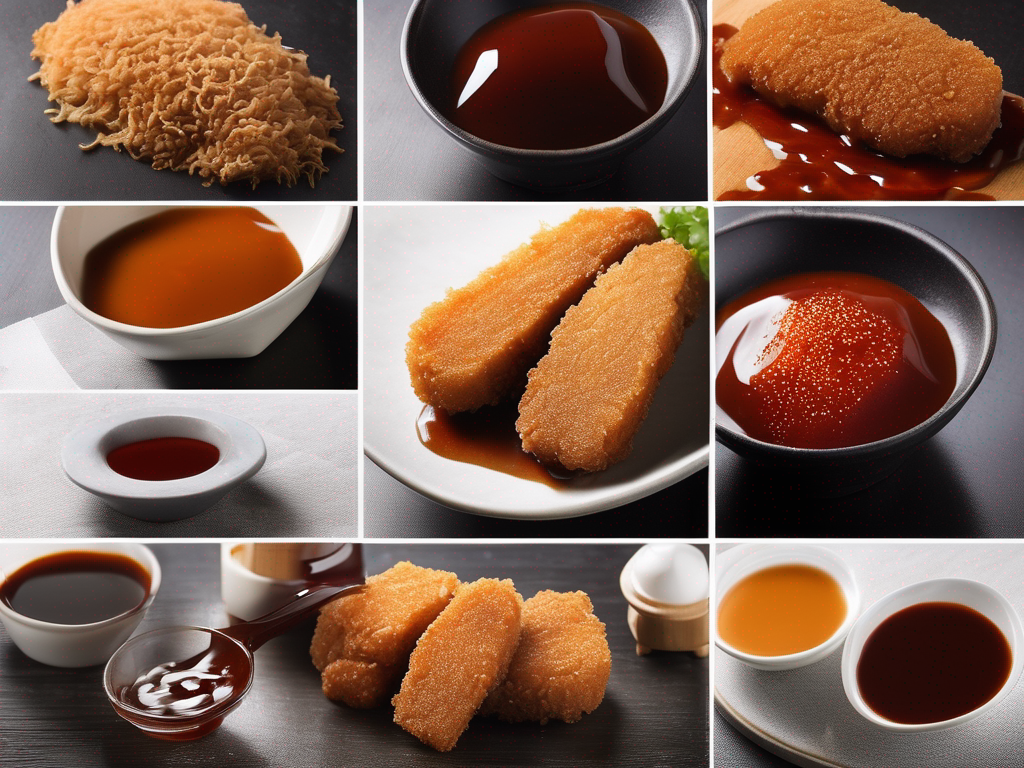
The Best Tips for Storing Katsu Sauce (Tonkatsu Sauce) - Commercially Bottled Unopened
Get Your Free Food Safety Cheat Sheet
30 most common foods with instant answers. Print it and stick it on your fridge—completely free!
The Best Tips for Storing Katsu Sauce (Tonkatsu Sauce) - Commercially Bottled Unopened
Katsu sauce, also known as tonkatsu sauce, is a savory and tangy condiment that adds a burst of flavor to a variety of dishes, especially Japanese cuisine. When it comes to storing commercially bottled, unopened katsu sauce, proper storage is crucial to maintain its quality, flavor, and safety. In this blog post, we will explore the best tips for storing katsu sauce to ensure it stays fresh and safe for consumption. (Katsu sauce tonkatsu sauce)
Importance of Proper Storage for Katsu Sauce
Proper storage of katsu sauce is essential to maintain its flavor, texture, and overall quality. Improper storage can lead to flavor degradation, spoilage, and potential foodborne illnesses. Here are some key reasons why proper storage is vital for katsu sauce:
Flavor Preservation
- Proper storage helps preserve the original flavor profile of the katsu sauce.
- Exposure to light, heat, and air can alter the taste and aroma of the sauce.
Food Safety
- Maintaining the correct storage conditions prevents the growth of harmful bacteria and pathogens.
- Properly stored katsu sauce reduces the risk of foodborne illnesses.
Extended Shelf Life
- By following the recommended storage guidelines, you can extend the shelf life of katsu sauce.
- Proper storage conditions help prevent spoilage and maintain the sauce's quality over time.
Best Tips for Storing Katsu Sauce (Tonkatsu Sauce)
When it comes to storing commercially bottled, unopened katsu sauce, here are some essential tips to keep in mind:
1. Store in a Cool, Dark Place
- Location: Store the unopened katsu sauce in a cool, dark place away from direct sunlight.
- Temperature: Maintain a consistent temperature between 50°F and 70°F for optimal storage conditions.
2. Check the Expiry Date
- Expiration Date: Always check the expiration date on the bottle before storing the katsu sauce.
- Use First In, First Out: Follow the "first in, first out" principle to ensure you use older bottles before newer ones.
3. Keep Away from Heat Sources
- Avoid Heat: Keep the katsu sauce away from heat sources such as stoves, ovens, or sunlight exposure.
- Temperature Fluctuations: Fluctuations in temperature can affect the quality of the sauce, so maintain a stable storage environment.
4. Seal the Bottle Properly
- Tight Seal: Ensure that the bottle is tightly sealed to prevent air and moisture from entering.
- Refrigerate After Opening: Once opened, store the katsu sauce in the refrigerator to maintain freshness.
5. Avoid Contamination
- Clean Storage Area: Store the katsu sauce away from any contaminants or strong odors.
- Cross-Contamination: Prevent cross-contamination by keeping the bottle sealed and stored upright.
Conclusion
In conclusion, proper storage of commercially bottled, unopened katsu sauce is essential to preserve its flavor, quality, and safety. By following the tips outlined in this blog post, you can ensure that your katsu sauce stays fresh and delicious for an extended period. Remember to store the sauce in a cool, dark place, check the expiration date, keep it away from heat sources, seal the bottle properly, and avoid contamination. By taking these simple steps, you can enjoy the rich flavors of katsu sauce in your favorite dishes while ensuring food safety. (Katsu sauce tonkatsu sauce)
Authoritative Food Safety References
These agencies and university labs inform every tip and health precaution we publish.
USDA FoodKeeper – Cold Storage Guidelines
Official refrigerator, freezer, and pantry timelines maintained by the U.S. Department of Agriculture.
Visit USDA FoodKeeperFDA Produce Safety Rule & Grower Guidance
Field-to-fridge handling practices that prevent contamination of fruits, vegetables, and leafy greens.
Visit FDA Produce SafetyCDC Foodborne Illness Prevention Hub
Surveillance-backed guidance on pathogens, symptoms, and steps to reduce foodborne illness risk.
Visit CDC Food SafetyUC Davis Postharvest Technology Center
University research detailing optimal storage atmospheres for produce after harvest.
Visit UC Davis PostharvestPenn State Extension – Home Food Preservation & Safety
Peer-reviewed extension bulletins on safe canning, chilling, and reheating practices.
Visit Penn State ExtensionGet Your Free Food Safety Cheat Sheet
30 most common foods with instant answers. Print it and stick it on your fridge—completely free! Want more? Upgrade to the complete guide with 70+ foods.
Scan your food directly and get instant safety info using our AI-powered camera feature.